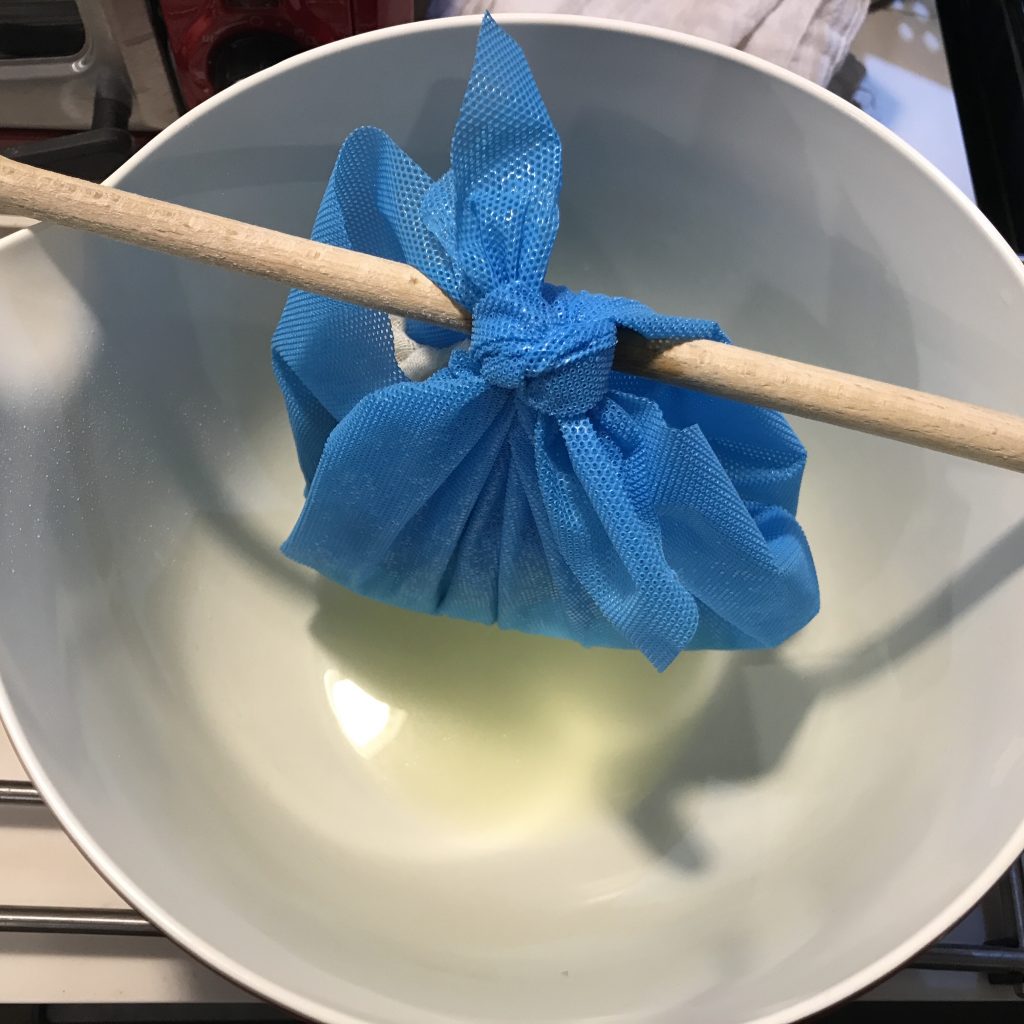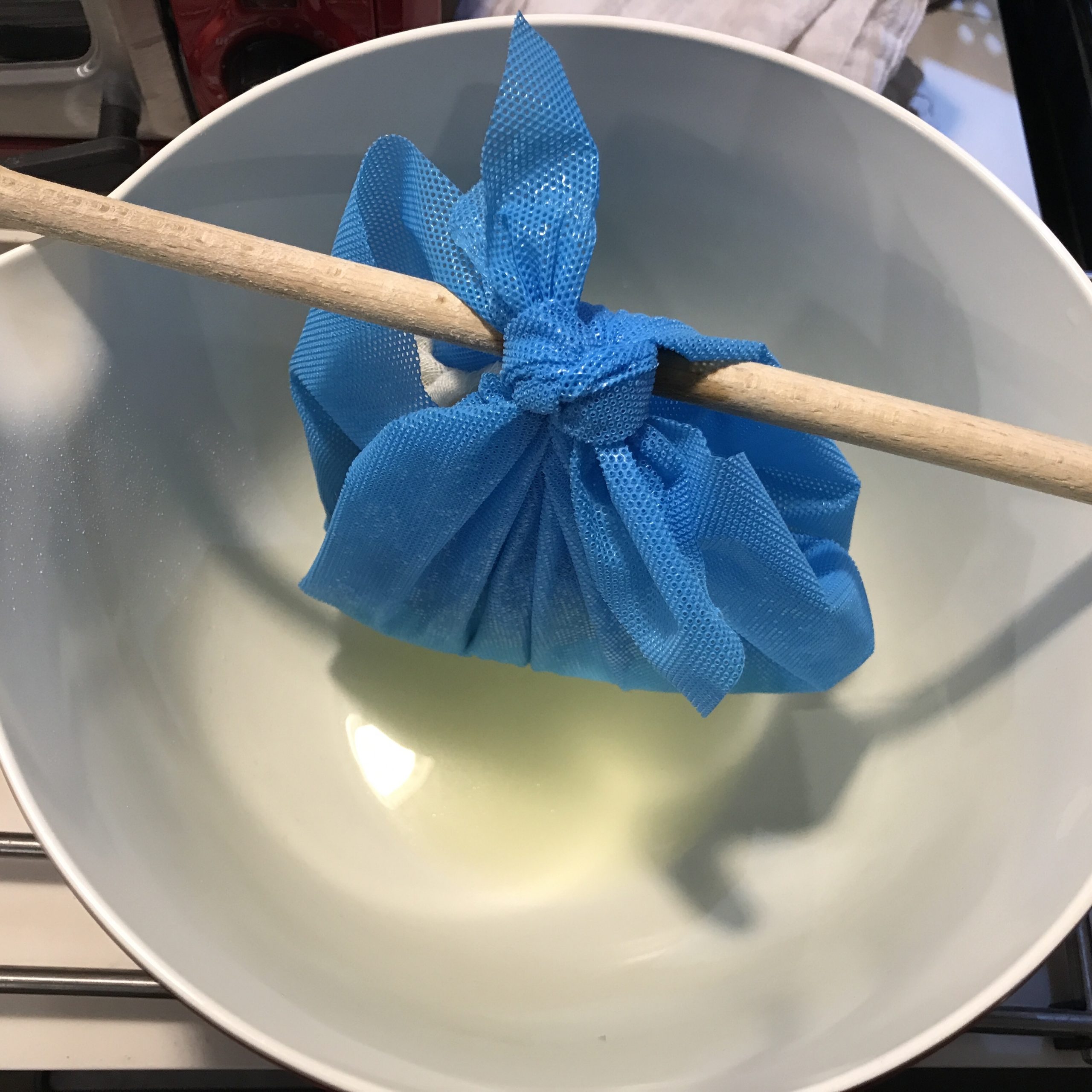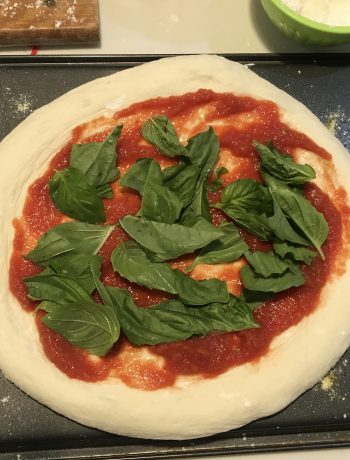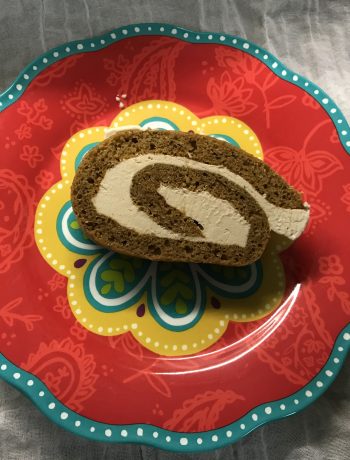Yeah, I just couldn’t leave well enough alone after making ricotta for the cannoli filling. I’m headed to Julie’s for a homemade pasta fiesta, because we took a Sur la Table class on making pasta from scratch, and now we’re testing it on unsuspecting friends and family!! At the class, we made bow-tie pasta with pesto and goat cheese, which was divine, so when I saw a half-gallon of goat’s milk at H-E-B, I stopped my cart, looked up homemade goat’s cheese, and saw there’s a farmer’s cheese version that is almost identical to the ricotta recipe. So I grabbed the carton.
Of course, I forgot to check, and it’s UHT. But I’m going forward with the plan to try to make it into farmer’s cheese with lemon juice and white vinegar anyway. Let’s see what happens.
It’s “farmer’s cheese” because it’s made with an acid, and it’s soft and spreadable, vs a hard (or harder) sliceable cheese made with rennet or other special cheese culturing ingredients. That’s my definition anyway – if you google it, those definitions want bacteria and rennet involved too, but mostly these recipes are heated milk + acid = curds and whey.
So, my inspirations for this recipe are The Spruce Eats and Analida’s Ethnic Spoon. They’re very similar to the ricotta recipes – heat milk, add acids, but differ in the acids and quantities.
Homemade Goat's Cheese (Farmer's Cheese)
Ingredients
- 4 c goat's milk, non-UHT
- 1/3 c freshly squeezed lemon juice (well, I added the lemon juice and white vinegar together because I didn't have a full 1/3 c of lemon juice.)
- 2 T white vinegar
- 1/2 t salt (or to taste)
- Optional dried or fresh chopped herbs for flavoring after making it.
Instructions
In a non-reactive pan (I used an enameled dutch oven), heat the goat's milk to 180° F, stirring frequently
Stir in the acids and let it sit for 10 minutes, or 30 minutes, depending on your source.
Pour the curds and whey into a cheesecloth lined colander over a catch-bowl, then add the salt and stir.
I'm unclear on how long to drain like this (I think I left it for5-10 minutes like this) but both recipes say to pick up the cheesecloth, form into a hanging ball and somehow hang it over the sink or a bowl and continue to drain. This is sort of how people do nut milk as well and I'm not sure if this is any better or different than just allowing it to drain in the cheesecloth.
This draining over the bowl in a ball should be 1 - 1.5 hours, per the links above.
Then shape it and refrigerate.
I believe the refrigerated shelf life is similar to other soft cheeses which is 5 - 7 days.
Notes
You can add dried or fresh chopped herbs when you shape it before putting it in the fridge.
Also you can rinse the curds to cut down on the tangy flavor, but I'm not sure when, probably before shaping and refrigerating.
What to do with all this whey?? I've frozen it; the dog loves it; some say to use it in smoothies and as the liquid in breadmaking. It's theoretically good for your skin too! But I don't wash in it (although goat's milk powder in a hot bath is really wonderful for the skin, and I have done that.)







No Comments